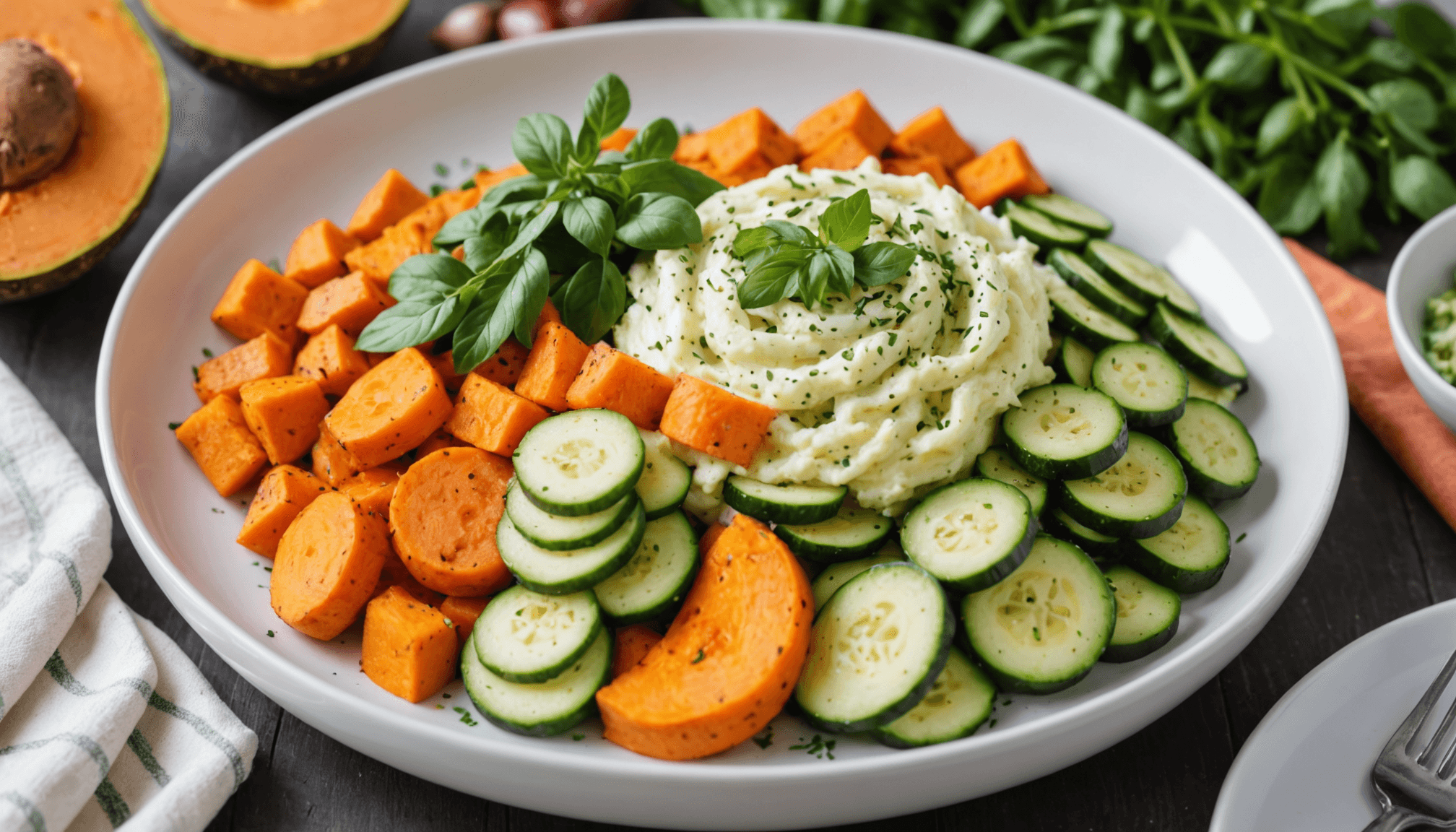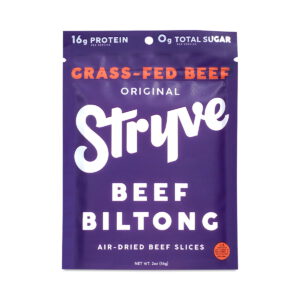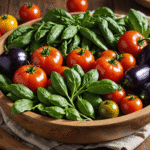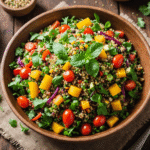- Low-calorie meal options
- Quick preparation techniques
- Ingredient substitutions
- Meal planning tips
- Easy recipes for busy nights
- Storing and reusing leftovers
When it comes to grocery shopping for low-calorie meals, making informed choices can truly elevate your meal preparation experience and keep you on track with your dietary goals. Here’s how to navigate the grocery aisles efficiently and snag the best ingredients for your healthy recipes.
Start by making a shopping list before heading to the store. This helps prevent impulse buys and ensures you only grab what you need for your low-calorie meals. Focus on foods that are fresh, seasonal, and locally sourced. Visiting farmers’ markets can be a great way to find organic and sustainable produce at reasonable prices. Think vibrant fruits and veggies that are packed with nutrients – like kale, spinach, tomatoes, and berries – all of which make excellent additions to your meals.
When shopping for proteins, opt for lean options such as chicken breast, turkey, or plant-based sources if you’re following a vegan lifestyle. Beans, lentils, and tofu are budget-friendly and versatile ingredients that can be incorporated into numerous dishes while keeping calorie counts low. Don’t forget about fish; fatty fish like salmon provide healthy omega-3 fatty acids that contribute to overall wellness.
For those following specific dietary regimens, such as veganism or fitness-focused diets, it’s essential to read labels carefully. Look for snacks and packaged foods with fewer added sugars and high in protein. Whole grains, such as quinoa and brown rice, are also great choices; they offer substantial fiber that can help keep you fuller for longer, supporting your low-calorie meal goals.
Online shopping can be convenient, but be cautious about safety and ingredient quality. Make sure to order from reputable retailers and check customer reviews. Look for stores that offer transparent labeling of their products, especially for organic items. This ensures that you receive the high-quality ingredients you expect. If purchasing items such as frozen fruits or vegetables online, verify that they have been handled properly to prevent spoilage or freezer burn.
Don’t underestimate the power of bulk buying. Purchase staples like oats, lentils, and nuts in larger quantities to save money over time. Just ensure that you store them securely to maintain freshness. Always check expiration dates and choose the items with the longest shelf life when buying in bulk.
Lastly, remember to engage with your local community. Supporting local farmers and producers not only helps the economy but also gives you access to fresh ingredients. Many local farms offer subscription services for seasonal produce, ensuring your pantry stays stocked with low-calorie meal options throughout the year.
Quick preparation techniques
By incorporating efficient techniques into your cooking routine, you can significantly reduce meal prep time while still focusing on low-calorie meals. One effective method is to utilize batch cooking, where you prepare larger quantities of food at once. This can particularly be beneficial for staples like grains or proteins. For example, cooking a big batch of quinoa or brown rice can serve as a base for multiple meals throughout the week, allowing you to mix and match with various vegetables and proteins.
Another practical approach is to employ the use of kitchen gadgets that speed up meal preparation. Tools like pressure cookers, slow cookers, and air fryers can drastically cut down cooking times or simplify the cooking process. Pressure cookers can reduce the cooking time for beans and legumes, which are excellent low-calorie, high-fiber meal options. Slow cookers allow you to set your ingredients in the morning and return after work to a fully prepared meal that’s ready to serve. Air fryers provide a healthier alternative to frying, allowing you to enjoy crispy textures with less oil.
Mise en place is a French culinary concept that translates to “everything in its place,” and it can also save you valuable time. Before you start cooking, prepare and organize your ingredients. Chopping vegetables, measuring spices, and pre-portioning sauces in advance will streamline the cooking process. As an added benefit, this also minimizes the chaos in the kitchen, making for a more enjoyable cooking experience.
When it comes to the actual cooking, consider one-pan meals or sheet pan dinners as your go-to strategy. These types of meals require minimal cleanup and can be easily customized based on what you have available. Simply toss your low-calorie ingredients—like lean proteins, colorful vegetables, and healthy seasonings—on a single sheet pan and bake. This approach not only simplifies cooking but also enhances flavors as everything cooks together.
Utilizing frozen vegetables can also save time without compromising nutrition. Freezing locks in the vitamins and minerals of the produce, making it a convenient and healthy choice. They can be used straight from the freezer in stir-fries, soups, or salads, providing you with a quick way to add nutrients to your meals without any preparation.
To highlight these techniques further, here is a comparison of preparation time with various cooking methods:
| Cooking Method | Average Preparation Time | Notes |
|---|---|---|
| Batch Cooking | Several hours (once a week) | Longer upfront, but saves daily cooking time. |
| Pressure Cooking | 10-30 minutes | Ideal for beans, grains, and meats; fast cooking. |
| Slow Cooking | 5-15 minutes (prep) + 4-8 hours (cooking) | Set it and forget it; perfect for busy schedules. |
| One-Pan Meals | 20-30 minutes | Easy cleanup and versatile ingredients. |
| Frozen Vegetables | 0 minutes | No prep needed; quick and convenient. |
Integrating these quick preparation techniques not only makes cooking less daunting but also fosters a sense of accomplishment as you whip up healthy recipes with minimal effort. This efficient approach allows for maintaining a healthy lifestyle, encouraging experimentation in the kitchen without feeling overwhelmed by time constraints.
Ingredient substitutions

When it comes to ingredient substitutions, knowing your options can not only enhance the nutritional value of your meals but also help you adapt your recipes to fit your dietary needs and preferences. Whether you’re looking for healthier alternatives or trying to accommodate food allergies and restrictions, there are plenty of creative swaps that can make your cooking easier and more enjoyable.
For instance, if you’re craving a creamy texture in dishes like pasta or soups, consider using cauliflower puree instead of heavy cream. This low-calorie alternative offers a similar mouthfeel without the extra calories and can provide a burst of nutrients. To make the puree, simply steam cauliflower florets until soft, then blend until smooth. This trick is not only great for creamy sauces but also works well in mashed potatoes or as a thickener for soups.
Another simple substitution involves grains. If you’re looking for a gluten-free alternative to traditional pasta, try spiralized vegetables like zucchini or sweet potatoes. These options are lower in calories and packed with essential vitamins. Cooking them quickly in a hot pan with a splash of olive oil and your favorite seasonings can create a delicious and healthy dish that satisfies your pasta cravings.
For sweetening your meals or snacks, opt for natural sweeteners like maple syrup or honey over refined sugars. For a lower-calorie option, consider using mashed bananas or unsweetened applesauce in baking. These alternatives provide moisture and sweetness while reducing calorie content—perfect for muffins or pancakes!
In the world of proteins, if you’re looking to reduce your meat intake while still getting adequate protein, chickpeas can be a fantastic substitute for ground meat in tacos or burgers. Simply mash them up and mix with your favorite spices, then shape and cook. You’ll enjoy hearty flavors without feeling weighed down.
For those who are vegan, replacing eggs in recipes is simplified with options like flaxseed meal or chia seeds. Mix one tablespoon of flaxseed meal or chia seeds with three tablespoons of water, allow it to sit for a few minutes to thicken, and you’ve got a great binding agent for veggie burgers or energy bars without adding cholesterol.
Don’t forget to leverage the beauty and versatility of spices and herbs! If you find recipes lacking flavor, opt for fresh herbs like parsley, cilantro, or basil, rather than extra salt or fats. Fresh herbs not only boost flavor but are also full of antioxidants, making your low-calorie meals even healthier.
When it comes to grocery shopping, whether online or in-store, remember to check the quality of your substitutions. Always look for organic options when possible, as they ensure fewer pesticides and better sustainability. Additionally, explore local markets where you might discover unique varieties of produce or alternative grains that can serve as healthy swaps in your recipes.
Lastly, consider food safety when selecting replacements, especially if you’re opting for substitutes that are less common. Make sure to read labels carefully for any allergens or preservatives. For online shopping, choose retailers that offer transparent information about their products’ origins and handling practices, which is essential for maintaining the integrity of your low-calorie meals.
Meal planning tips
Meal planning is an essential step in successfully integrating low-calorie meals into your daily routine. By taking the time to plan, you set yourself up for success, ensuring that you have the right ingredients on hand and that meal prep does not become a last-minute scramble. Begin by dedicating a specific day each week to create a meal plan; this will allow you to map out what you’ll eat throughout the week and identify any necessary shopping items.
To create an effective meal plan, utilize a template or a simple note-taking app that allows you to lay out breakfast, lunch, dinner, and snacks. Choose recipes that not only cater to your taste preferences but also prioritize those that are easy to prepare. This will help keep the process exciting and manageable. Consider incorporating a variety of low-calorie meals that include different proteins, vegetables, and whole grains to maintain a balanced diet.
When planning, think about your schedule for the week. If you know certain days are busier, opt for quicker meal options or leftovers from earlier in the week. This means less time spent in the kitchen and more time for other activities. Consider one-pot dishes or slow-cooked meals that allow flavors to meld without requiring constant attention.
You can also allocate a few hours during the weekend to meal prep. This might include chopping vegetables, cooking grains, or marinating proteins in advance to lessen the load on weekdays. Having items ready to go not only speeds up the cooking process but also decreases the temptation to opt for less healthy food options when you’re hungry and pressed for time. Utilize clear containers to organize prepped ingredients, making it easy to grab what you need for your meals.
Another helpful tip is to incorporate “theme” nights into your meal plan. For example, designating Mondays as “Meatless Monday,” and dedicating Wednesdays to “Wrap Wednesdays” can help streamline your focus and simplify the planning process. This approach fosters creativity and encourages you to explore a variety of low-calorie meals.
Be flexible and open to change in your meal planning. If something comes up and you can’t stick to your original plan, allow yourself to pivot. It’s more important to maintain the overall goal of healthy eating rather than getting caught up in specific details.
Finally, keeping an ongoing list of your favorite low-calorie meals can serve as a resource when planning. Refer back to previous weeks to draw inspiration, or swap in seasonal ingredients to keep your menu fresh and varied.
“By failing to prepare, you are preparing to fail.” – Benjamin Franklin
This proactive approach to planning allows you to enjoy your meals while staying committed to your health goals, making it easier to stick to a low-calorie lifestyle without feeling deprived.
Easy recipes for busy nights
 Preparing low-calorie meals on busy nights doesn’t have to feel overwhelming. Instead, opting for recipes that require minimal ingredients and quick cooking times can lead to satisfying dinners that are both nutritious and delicious. Start by focusing on versatile base ingredients such as whole grains, leafy greens, and lean proteins. A stir-fry is an excellent choice; toss together your favorite vegetables with a protein source like shrimp or tofu, and serve it over brown rice or quinoa. With just a few minutes of cooking time, you can create a colorful dish that is filling and light.
Preparing low-calorie meals on busy nights doesn’t have to feel overwhelming. Instead, opting for recipes that require minimal ingredients and quick cooking times can lead to satisfying dinners that are both nutritious and delicious. Start by focusing on versatile base ingredients such as whole grains, leafy greens, and lean proteins. A stir-fry is an excellent choice; toss together your favorite vegetables with a protein source like shrimp or tofu, and serve it over brown rice or quinoa. With just a few minutes of cooking time, you can create a colorful dish that is filling and light.
Sheet pan dinners are another ideal solution for busy weeknights. Simply layer your choice of protein—like chicken breast or salmon—with an assortment of seasonal vegetables. Drizzle with a light marinade, sprinkle on some herbs, and roast everything together at a high temperature. This method not only minimizes cleanup but also allows the ingredients to caramelize, enhancing their flavors.
Tacos can also be prepared in no time while being customizable to your dietary needs. Use corn or whole wheat tortillas and fill with black beans, diced tomatoes, and fresh avocado for a quick assembly dinner. Pair it with a side of steamed broccoli or a fresh salad to round out your meal and increase nutrient content without adding many calories.
For those who prefer meals that can be prepped ahead, consider making a big batch of a hearty soup. A vegetable-based soup with lentils not only packs a nutritional punch but also keeps well in the refrigerator for several days. Simply heat it up after a long day and enjoy a warm, comforting bowl of goodness.
Incorporating ingredients like frozen herbs or pre-chopped vegetables can significantly cut down on prep time while still ensuring that your low-calorie meals are full of flavor. Investing in some pantry staples, such as canned beans or pre-cooked grains, can provide even greater flexibility during busy evenings. When you have the essentials on hand, you can easily whip up dishes on the fly without compromising on your health goals.
When it comes to keeping your meals exciting, consider exploring different cuisines. Quick recipes inspired by Mediterranean, Asian, or Mexican cooking can provide a range of flavors and ingredients, keeping your palate happy even during hectic times.
- What are some quick low-calorie meal ideas for busy nights?
- Consider stir-fries, sheet pan dinners, or tacos that can be assembled quickly with minimal ingredients. Soups and salads with pre-cooked grains or proteins also make excellent options.
- How can I reduce the time it takes to prepare meals?
- Utilize batch cooking, meal prep on weekends, and choose recipes that use fewer pots and pans, like one-pan or sheet pan meals.
- Are frozen vegetables a healthy option?
- Yes, frozen vegetables are often picked at their peak freshness and can be just as nutritious as fresh options, making them a convenient choice for quick meals.
- What can I use instead of rice for low-calorie meals?
- Consider alternatives like cauliflower rice or quinoa, which provide fewer calories while adding nutrients and fiber to your diet.
- How do I ensure fairness when trying new recipes?
- Start with a few reliable recipes, vary the ingredients to keep things interesting, and refer to online resources for inspiration and guidance.
- Is it okay to have leftovers from my low-calorie meals?
- Absolutely! Leftovers can save time and reduce food waste, while still allowing you to enjoy healthy and delicious meals throughout the week.
- What herbs should I keep on hand for quick seasoning?
- Fresh herbs like basil, parsley, and cilantro are versatile and can elevate the flavors of your dishes without adding extra calories.
Storing and reusing leftovers
Properly storing and reusing leftovers is a fantastic way to minimize food waste, save time, and create new meal opportunities, all while maintaining your commitment to low-calorie meals. Start by ensuring that you store any leftovers promptly after your meal. The general rule of thumb is to get your food in the refrigerator within two hours to prevent bacteria growth.
Use airtight containers to keep leftovers fresh. Glass containers are a great option as they do not retain odors or stain easily, unlike some plastic containers. Label your containers with the date and contents, which can be immensely helpful for planning meals throughout the week. Aim to use leftovers within three to four days for safety and optimal taste.
When it comes to reusing your leftovers, think creatively! If you made a vegetable stir-fry for dinner, consider repurposing it into a delicious low-calorie soup. Simply add vegetable broth, seasonings, and any additional fresh vegetables you have on hand, and you’ll have a quick and healthy meal for your next lunch. Alternatively, leftover grilled chicken can be tossed onto a salad or wrapped in a whole wheat tortilla with fresh veggies for a refreshing lunch option.
For pantry staples, consider transforming leftover grains like quinoa or brown rice into a hearty grain salad. Mix in chopped veggies, a protein such as chickpeas, and a light vinaigrette for an easy, nutrient-dense meal. This approach not only saves time but also keeps your meals varied and exciting.
When planning to store cooked dishes, be mindful of the ingredients you are using. Ingredients such as dairy can spoil more quickly than others, so be cautious if you incorporate them into your meals. If you’re using sauces, consider keeping them separate until you’re ready to serve your leftovers, especially if they contain dairy or are prone to thickening.
For longer storage, consider freezing leftovers. Many meals, especially soups, stews, and casseroles, freeze well. Portion them into containers or freezer bags, and remember to label with the date and contents. This is an excellent option to have healthy recipes readily available for future busy nights. When you’re ready to enjoy them again, simply thaw in the refrigerator overnight or use a microwave-safe dish to defrost and heat back up quickly.
Keep in mind that reinventing leftovers can also be a budget-friendly practice. By utilizing what you already have in creative ways, you not only contribute to reducing waste but also ensure you are staying aligned with your health goals. Make it a fun challenge to reimagine your previous meals, and before you know it, you’ll be excited about your next culinary venture!
Lastly, when preparing your grocery list, keep an eye out for ingredients that lend themselves well to leftovers. Items like carrots, broccoli, and myriad grains fit the bill for versatile low-calorie meals that can stretch over multiple days without growing boring.
Incorporate these tips and tricks into your routine, and you’ll find that storing and reusing leftovers not only saves you time but also enhances your journey toward healthier eating.
New Customers Offer!
Free Gift for the new customer
$24 Value, When You Subscrib Visit Thrive Market












